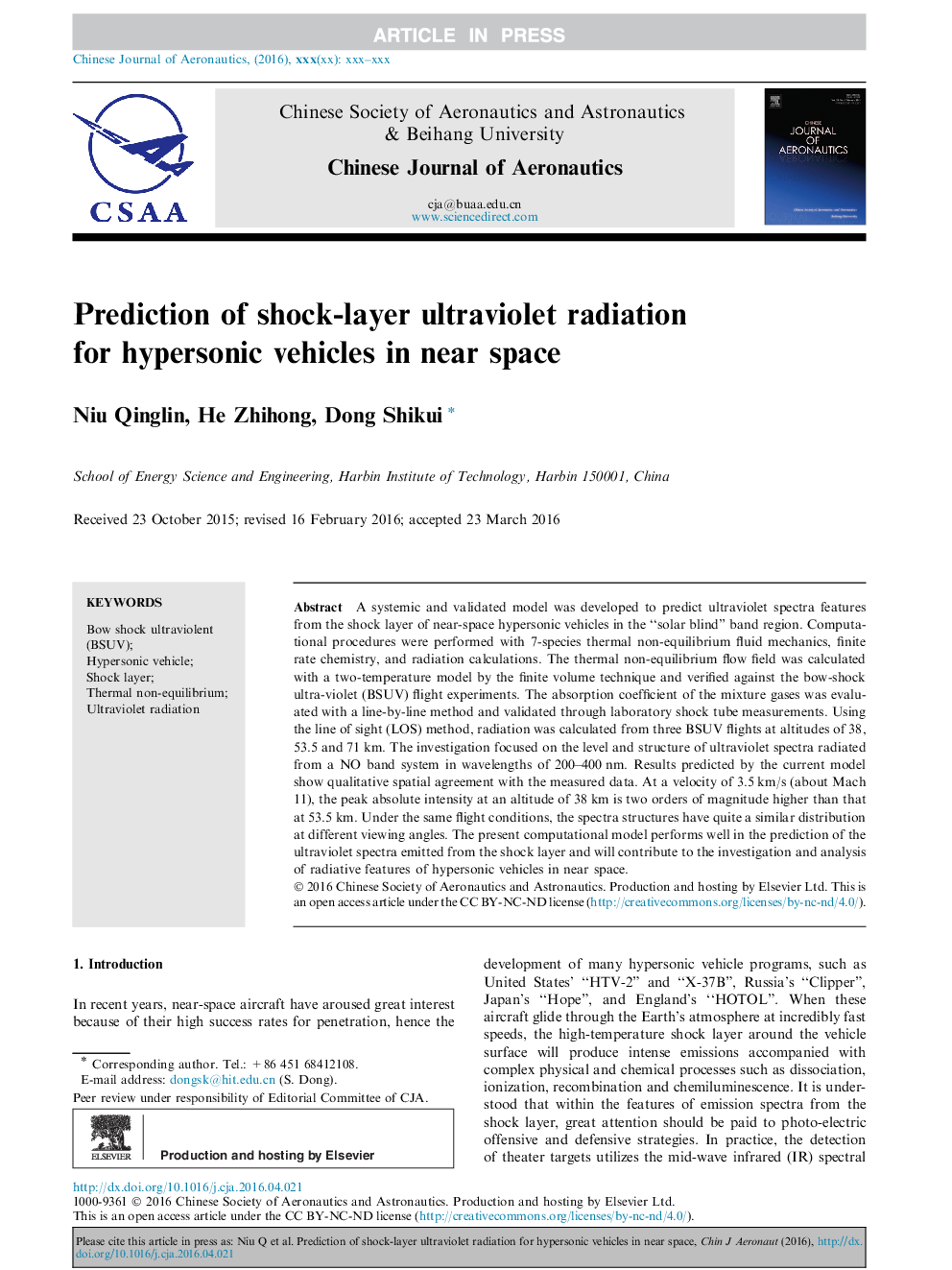| Article ID | Journal | Published Year | Pages | File Type |
|---|---|---|---|---|
| 7154348 | Chinese Journal of Aeronautics | 2016 | 11 Pages |
Abstract
A systemic and validated model was developed to predict ultraviolet spectra features from the shock layer of near-space hypersonic vehicles in the “solar blind” band region. Computational procedures were performed with 7-species thermal non-equilibrium fluid mechanics, finite rate chemistry, and radiation calculations. The thermal non-equilibrium flow field was calculated with a two-temperature model by the finite volume technique and verified against the bow-shock ultra-violet (BSUV) flight experiments. The absorption coefficient of the mixture gases was evaluated with a line-by-line method and validated through laboratory shock tube measurements. Using the line of sight (LOS) method, radiation was calculated from three BSUV flights at altitudes of 38, 53.5 and 71Â km. The investigation focused on the level and structure of ultraviolet spectra radiated from a NO band system in wavelengths of 200-400Â nm. Results predicted by the current model show qualitative spatial agreement with the measured data. At a velocity of 3.5Â km/s (about Mach 11), the peak absolute intensity at an altitude of 38Â km is two orders of magnitude higher than that at 53.5Â km. Under the same flight conditions, the spectra structures have quite a similar distribution at different viewing angles. The present computational model performs well in the prediction of the ultraviolet spectra emitted from the shock layer and will contribute to the investigation and analysis of radiative features of hypersonic vehicles in near space.
Related Topics
Physical Sciences and Engineering
Engineering
Aerospace Engineering
Authors
Niu Qinglin, He Zhihong, Dong Shikui,
